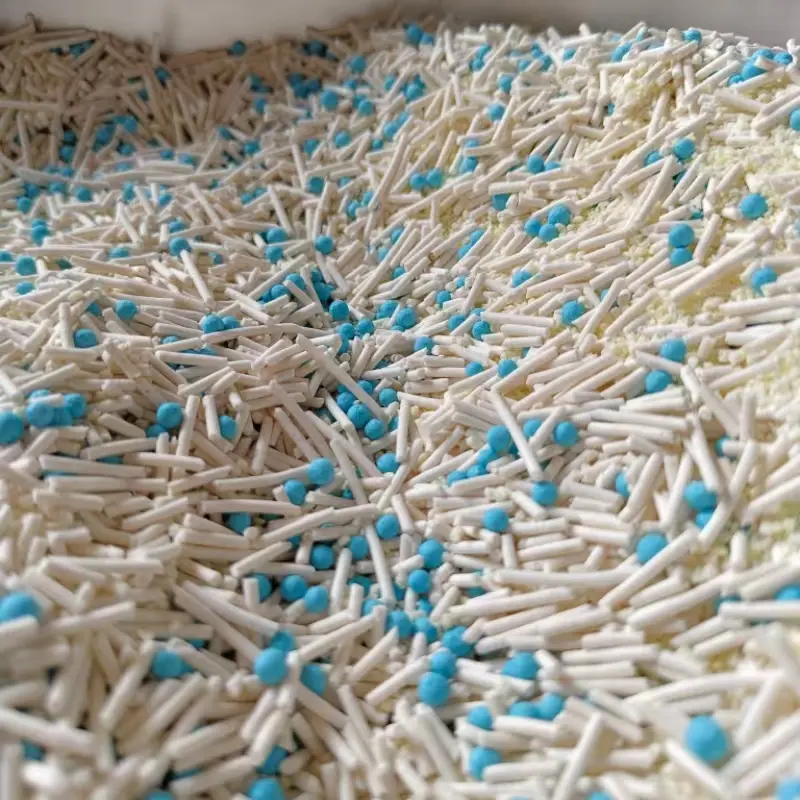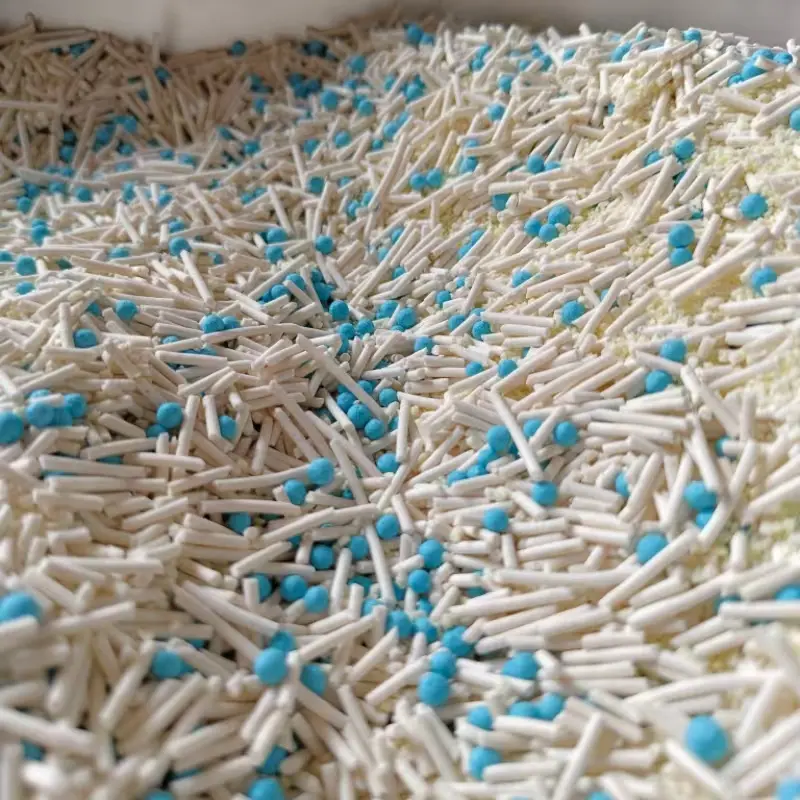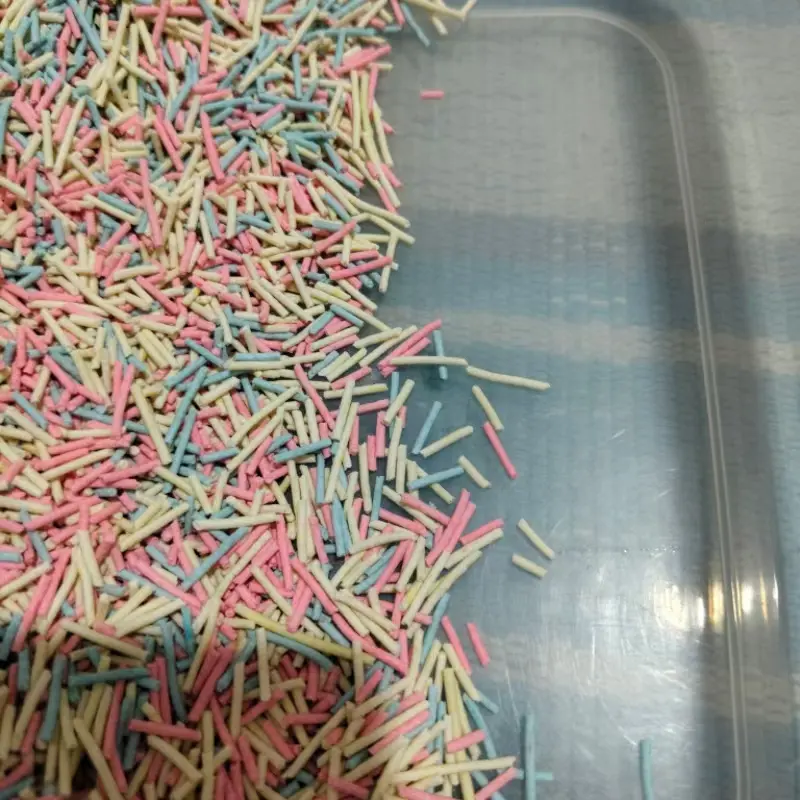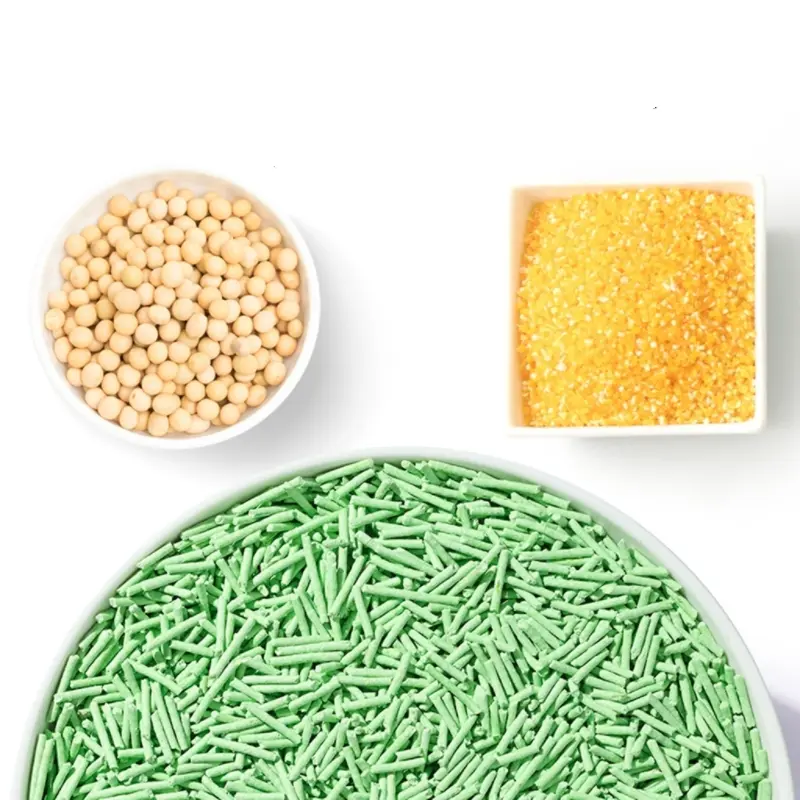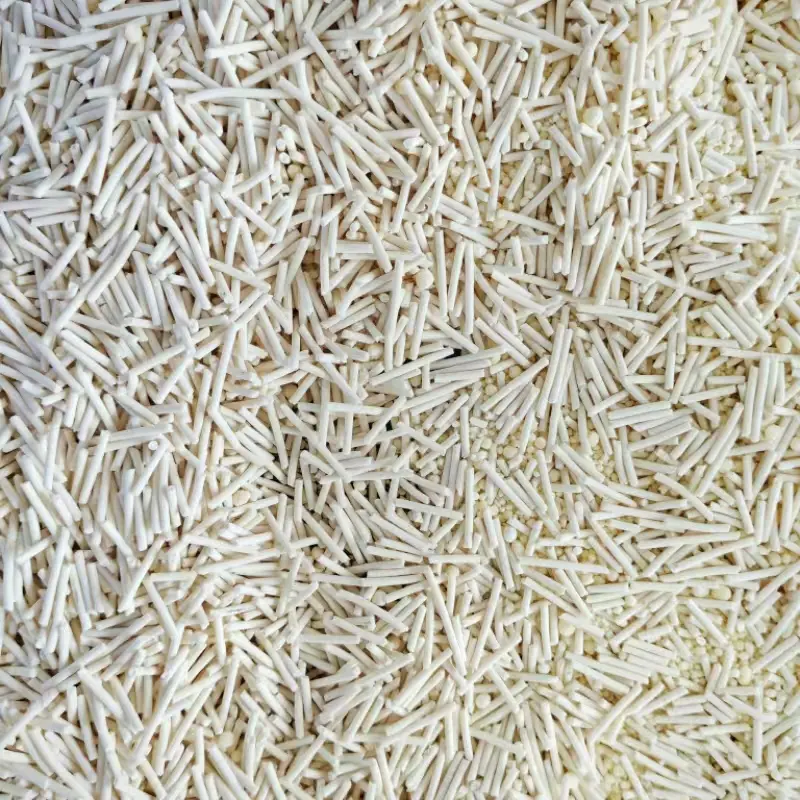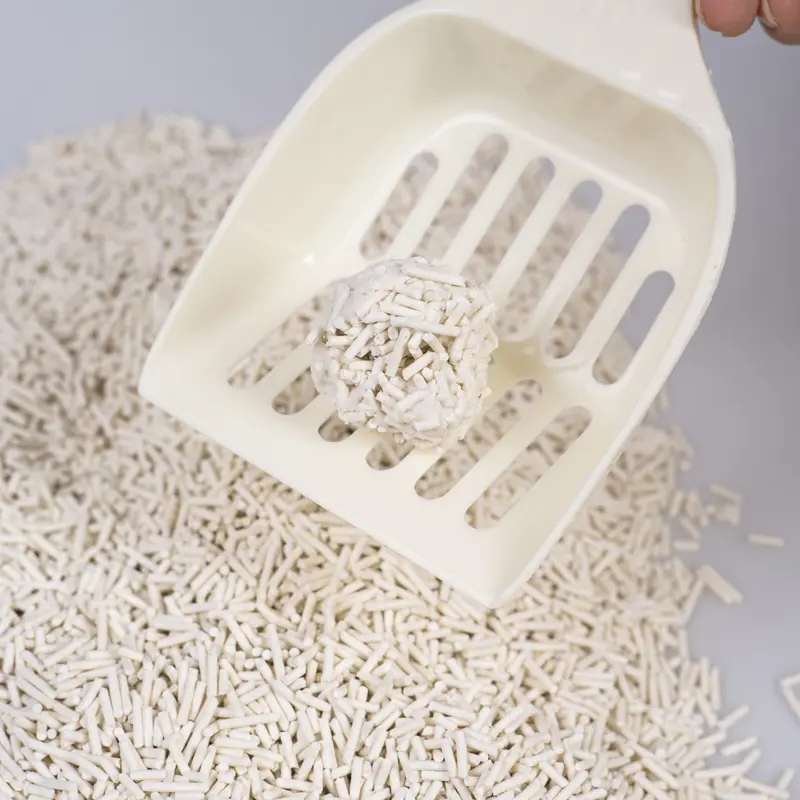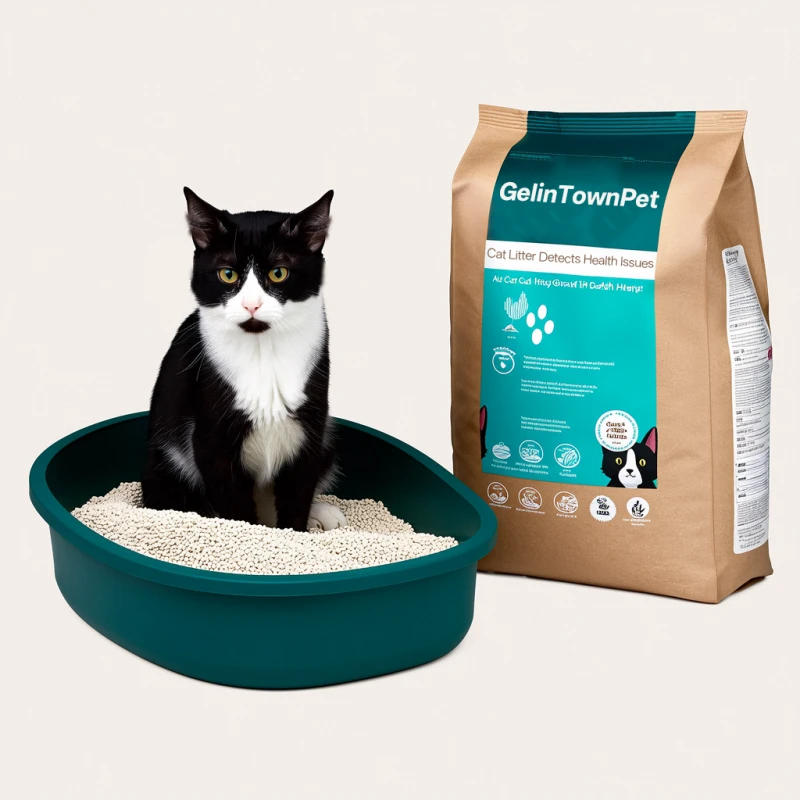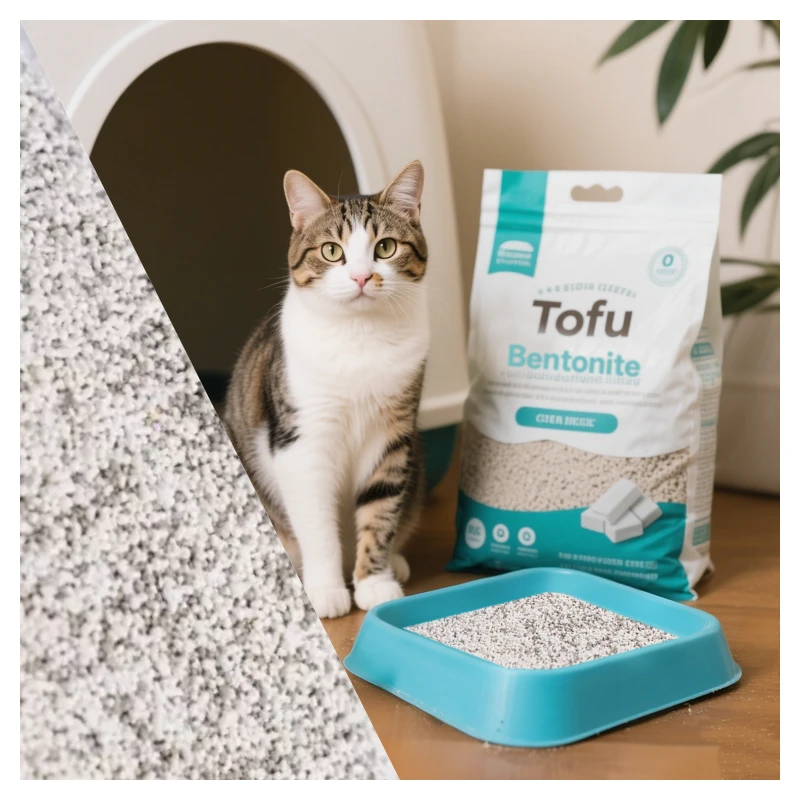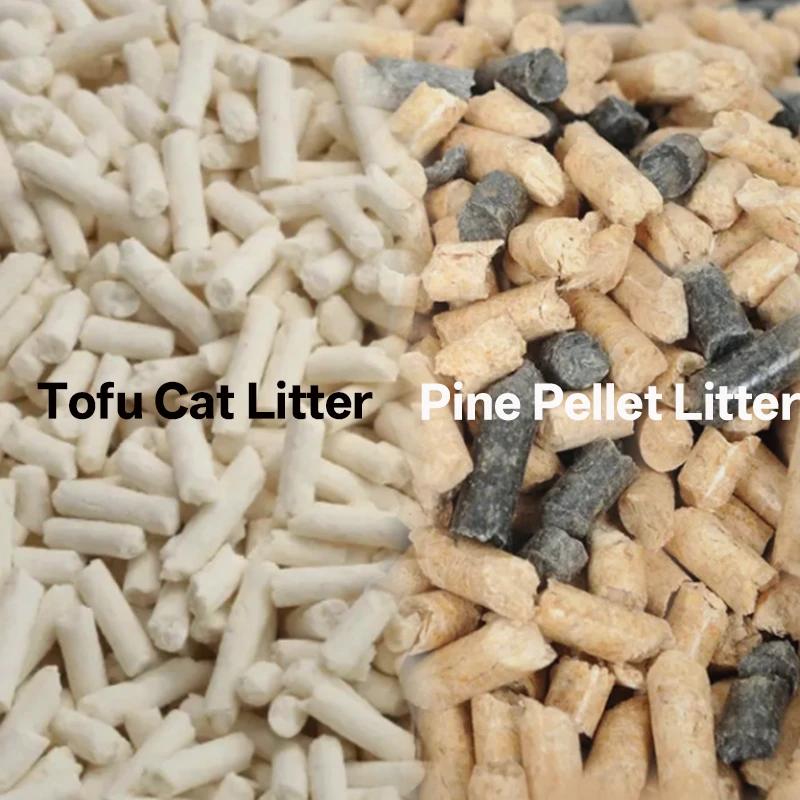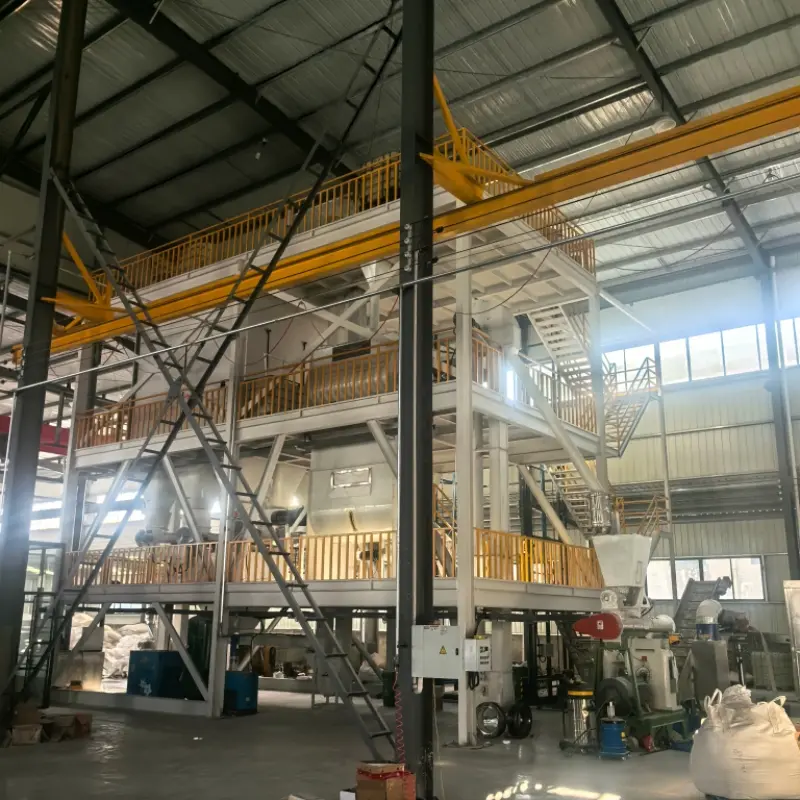Why choose cassava cat litter?
Cassava cat litter, with its exceptional physical properties, has become an ideal alternative to traditional bentonite cat litter. The cassava root is rich in natural starch and fiber, allowing it to quickly absorb moisture and form clumps, giving the litter excellent clumping ability. This plant-based material not only effectively controls odors but also provides a more eco-friendly solution.
Advantages of Cassava Cat Litter:
Superb Clumping Ability: Cassava cat litter quickly absorbs cat urine and forms strong clumps that are highly resistant to breaking, greatly reducing the hassle during cleaning.
Biodegradable and Eco-Friendly: After use, it can be composted as biomass and fully degrades in 6–12 weeks, reducing the pressure on solid waste landfills.
Comfortable Texture: The finer granules of cassava cat litter provide a desert-like feel, making it more comfortable for cats and easier for them to accept.
Low Dust: Made from pure plant fibers, it contains no mineral dust. There is almost no visible dust when pouring or stirring the litter, protecting both the cat's and the owner's respiratory health.
Key Marketing Selling Points:
Low Dust, Hypoallergenic
Super Fast Clumping in ≤ 2 Seconds
Flushable, Septic Tank Friendly
100% Plant-Based, Non-GMO
Market Trends in Cassava Cat Litter Production
Market Trends:
Environmental Trend: With the increasing awareness of environmental protection, consumers are more inclined to choose biodegradable and pollution-free products. Cassava cat litter, with its 100% biodegradable properties, aligns with this trend.
Growth of the Pet Economy: The global pet industry is growing rapidly, especially the cat market. More and more cat owners are willing to provide a more comfortable and healthier lifestyle for their pets.
Price Competitiveness: Although the production cost of cassava cat litter is relatively high, its market price remains competitive. Especially after large-scale production, the price of cassava cat litter can be further reduced, thus expanding its market share.
Cassava cat litter has made significant breakthroughs in terms of environmental benefits and can meet consumer demand for high-performance cat litter. Therefore, in the coming years, the market share of cassava cat litter is expected to steadily grow.
Overview of the Production Process of Cassava Cat Litter
The production process of cassava cat litter can be divided into several main steps: raw material preparation, mixing, extrusion, drying, screening, and packaging. Each step requires precise control to ensure the final product meets quality standards.
Raw Material Preparation
The main raw materials for cassava cat litter are cassava starch and corn starch. Ensuring the quality of cassava starch is crucial for the product's quality. The quality of cassava starch directly affects the litter's clumping ability, absorbency, and durability. Typically, the moisture content of cassava starch needs to be controlled below 12% to ensure the brittleness and drying effect of the particles. In addition to cassava starch, a small amount of guar gum may be added to enhance the litter's absorbency and clumping ability.Mixing During the production process
the raw materials need to be mixed to ensure that the cassava starch and other additives are evenly distributed. Using advanced mixing equipment, the raw materials are accurately proportioned and efficiently stirred, ensuring the uniformity of the final product.
Extrusion Molding
Extrusion molding is one of the key processes in the production of cassava cat litter. In this process, the cassava starch is processed by a twin-screw extruder, heated, and extruded into shape. The extrusion process not only gelatinizes the cassava starch but also creates a porous structure, enhancing its absorbency and clumping ability.
Drying
The wet material after extrusion needs to be dried to ensure its moisture content is within the standard range. Typically, belt dryers or rotary drum dryers are used for this step.
Drying Temperatur:The drying temperature for cassava cat litter is typically controlled at around 80°C. Excessively high temperatures may cause the particles to crack, while too low a temperature may not effectively remove moisture.
Drying Time:
Depending on the moisture content and particle size, the drying time usually ranges from 15 to 30 minutes to ensure the litter is completely dried while maintaining its clumping ability.
Screening and Cooling After drying,
the cassava cat litter particles need to be sorted by screening equipment to remove excess dust and defective particles. The screening equipment grades the particles by size and removes small-diameter dust, ensuring the uniformity of the litter particles. After screening, the cat litter particles need to undergo a cooling process to prevent clumping due to high temperature before packaging. The cooling process is usually completed using vibrating screens or cold air cooling systems.
Packaging
the cassava cat litter, after screening and cooling, enters the packaging stage. The packaging process is highly automated, and common packaging methods include bagging and box packaging. Each package is typically 6L, 8L, or 9kg, depending on market demand. Automated packaging equipment ensures accurate measurement of the litter and can extend the product's shelf life by using nitrogen packaging or vacuum packaging. During the packaging process, the production date, expiration date, ingredients, and other relevant information are labeled to ensure consumers can easily understand the product details.
Packaging of Cassava Cat Litter
Packaging is not just the external presentation of the product; it directly affects the product's safety, ease of use, and market sales. Therefore, the packaging design and production process of cassava cat litter need to be given special attention. High-quality packaging can effectively protect the litter's quality and ensure that it is not affected by external environments during transportation and storage.
Packaging Types
Cassava cat litter comes in various packaging forms, typically including the following:
Bags: Bagged packaging is the most common form for cassava cat litter, usually available in different sizes such as 6L, 8L, 10L, etc. Bagged packaging is convenient for consumers to use and allows the product's market positioning to be adjusted based on the product's specifications.
Boxes: Box packaging is typically used for wholesale or bulk purchases, making it suitable for stores and supermarkets. Each box usually contains multiple smaller bags for better distribution.
Packaging Materials
Plastic bags are the most common packaging material, offering advantages such as being lightweight, moisture-resistant, and durable. Commonly used plastic bag materials include PE (Polyethylene) and PP (Polypropylene), both of which have good water resistance.
Frequently Asked Questions
Q1: Can cassava cat litter be mixed with tofu cat litter?
Yes. Mixing the two combines their respective advantages and can also effectively reduce costs.
Q2: What is the minimum order quantity (MOQ) for OEM?
One × 20‑foot GP container (about 11 tons). Delivery is 20–30 days after design approval.
Get an OEM/ODM Quote
Email: info@sdgelin.cn
